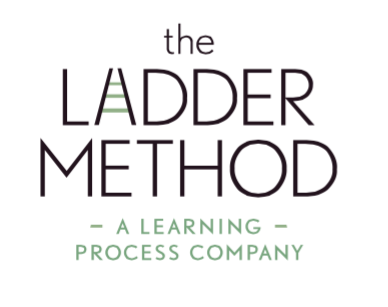How Do You Recover And Heal From ADHD Burnout For Good?
Burnout isn’t just about being tired—it’s a deep kind of exhaustion that drains your mind, body, and emotions. And if you’re an adult with ADHD, you might feel it more often—and more intensely. Everyday tasks take more effort, emotions hit harder, and the pressure to keep up never seems to stop. But here’s the truth: burnout doesn’t have to be your normal. In this blog, we’ll break down the real reasons ADHD burnout hits so hard—and more importantly, how you can recover, step by step, and start feeling like yourself again.
Why Burnout Hits Adults with ADHD So Hard
Do you often feel worn out, like you’re running on empty?
Do you daydream about escaping everything, just to breathe?
Is it getting harder to start tasks, finish them, or stay focused?
These are strong signs of burnout—a deep mental, emotional, and physical exhaustion. And if you're an adult with ADHD, you’re more likely to face it regularly. Why? Because several key challenges make daily life more draining.
The Mental Load of Executive Dysfunction
Adults with ADHD use more brainpower just to get through everyday tasks. Executive dysfunction makes it hard to manage time, avoid distractions, stick to schedules, or make clear decisions. You might double-book appointments, start five things at once, or feel like every task is urgent. An ADHD coach might explain it like this: "Could it be that individuals with ADHD burn more cognitive energy to get through the activities of their lives?"
Big Emotions, Little Energy
Emotional dysregulation means you often feel intense emotions that are tough to control. These feelings—whether stress, frustration, or sadness—can take over your mind and leave you mentally drained. It’s harder to say “no,” manage criticism, or set boundaries when your emotions hit so hard and fast. This emotional rollercoaster wears you out.
The Weight of Expectations
Many adults with ADHD carry a heavy load—managing homes, caring for family, keeping up with work, and more. Society often expects us to do it all, and do it perfectly. Trying to live up to those expectations adds a silent pressure that builds over time.
Hormones Make It Harder
Hormones play a significant role in how ADHD manifests. Changes in hormone levels, such as those during the menstrual cycle, PMS, menopause, or even shifts in testosterone, can worsen symptoms like poor focus, low energy, and mood swings. Conditions like PMDD (premenstrual dysphoric disorder) may also exacerbate ADHD symptoms, leading to increased burnout for both men and women.
Perfectionism and Pressure
Many of us set unrealistically high standards for ourselves. When we can’t meet them, we beat ourselves up. Instead of giving ourselves a break, we try to hide or fix our struggles, piling on more tasks to “prove” we’re capable. This leads to imposter syndrome, where you feel like a fraud even when you’re doing your best.
The Dopamine Dilemma
Adults with ADHD often chase stimulation. That might mean picking up new hobbies, bouncing between tasks, or staying glued to your phone. In some cases, it leads to addictive or unhealthy habits that offer short-term relief but long-term stress. This constant chase can zap your energy and focus even more.
For the Undiagnosed, It’s Worse
When ADHD is undiagnosed, it’s even harder to understand why you feel so exhausted, anxious, or stuck. Without answers, you might blame yourself or feel like you're failing at life. That lack of awareness leads to even deeper burnout—one that lingers for weeks or even months.
What are the Signs of Burnout
Burnout has a way of stealthily creeping in. We often don’t know that we’re approaching burnout until it’s too late. But the signs are there. Our body is always speaking to us, and we must learn its language. Signs of burnout include but are not limited to the following:
Emotional Signs of Burnout
· Feeling low on energy almost every day
· Struggling to keep up with everything
· Wanting to quit or escape from it all
· Feeling distant, isolated, or alone
· Pulling away from loved ones
· Getting stuck in negative thoughts or a gloomy mindset
· Feeling nervous, restless, or constantly on edge
· Feeling powerless or like nothing will help
· Having a hard time relaxing or turning your brain off
Physical Signs of Burnout
· Frequent headaches or migraines
· Trouble falling or staying asleep
· Tension or pain in the back, neck, or shoulders
· Digestive problems or discomfort
· Getting sick often
· Clenching your jaw or grinding your teeth
How to Recover from Burnout and Escape the Exhaustion Cycle
1. Dig Into the Root Causes
If your job is driving your burnout, you're not alone. In fact, the World Health Organization officially recognizes burnout as a work-related issue. To move forward, start by asking yourself some honest questions:
What drives me to overwork?
Many people push themselves too hard because of deep feelings of not being good enough. If you deal with imposter syndrome or fear of rejection—especially common in ADHD (like rejection sensitive dysphoria)—this might be a key reason you're burning out.
Are my expectations realistic?
Take a closer look at your perfectionism. Do you often feel like you didn’t do enough, no matter how much you’ve accomplished? Notice when and why these feelings show up.
Do I tie my worth to my job?
It’s easy to base your identity on your career. But ask yourself—who am I outside of work? What would it mean to let go of that identity, even just a little?
Am I working in a way that suits me?
We all have different energy patterns, interests, and ideal environments. Pay attention to what motivates you and when you feel most productive. Tools like personality quizzes or career assessments can help you understand your natural flow and shift how you approach work—and life.
Burnout often stems from trying to do it all, fueled by an inner critic that says you're not enough.
Start Noticing That Inner Critic
Pay attention to when that voice shows up. Is it when you try to rest? When you say no? When you ask for help? Let the critical voice speak, but don’t automatically believe what it says. Pause, listen, and remind yourself of what’s actually true.
2. Create and Honor Boundaries
Burnout often stems from overcommitting and overextending ourselves. While removing the source of stress is ideal, it’s not always realistic. That’s where setting strong boundaries becomes essential. Boundaries help you protect your energy, stay aligned with your values, and prevent exhaustion from creeping in unnoticed.
Start by asking yourself these key questions:
Where am I saying “yes” when I really want to say “no”?
Pleasing others at the expense of your well-being adds up over time. It’s okay to prioritize yourself.What do I truly value?
Is it time with your children, meaningful friendships, or personal growth? Write down the things that matter most to you. Turn them into a poster, a vision board, or a daily reminder you keep in plain sight. Then ask: Does the way I spend my time reflect these values?What fuels me—and what drains me?
Identify what gives you energy and what saps it. Energy-saving habits might include eating lunch away from your desk, stepping outside for a morning walk, doing a brain dump to clear mental clutter, or spacing out your meetings. Watch for hidden energy leaks like constant notifications, social media, messy spaces, or draining conversations.Am I clinging to outdated beliefs or generational patterns?
Maybe you were taught that resting is lazy or that productivity equals worth. These beliefs can quietly drive burnout. It’s time to question and release what no longer serves you.
Stop Multitasking—It’s Draining You
Multitasking may feel productive, but it’s one of the quickest ways to burn through your mental energy. Switching between tasks uses far more brainpower than you realize. Instead, slow down and work with intention.
Try these practical steps:
Stick to three tasks a day. Limit your to-do list to your top three priorities. Anything else is a bonus.
Work in short, focused bursts. Use a visual tool like a Time Timer to stay on track without the pressure of watching the clock.
Unplug when the day is done. Turn off notifications, put your phone out of reach, and take off your smartwatch to reduce distractions.
Ask yourself: How can I be present when my attention is constantly being pulled in five directions? The answer lies in simplifying your focus and honoring your energy.
3. Ask for—And Accept—Help
You don’t have to do it all alone. You deserve support.
Start by writing down the areas of your life that feel overwhelming—big or small. What’s draining you right now? What tasks or responsibilities keep piling up? Once you have a list, ask yourself: Where could I let someone step in and help?
Can your partner, kids, or family members take on a few regular tasks?
Is there something at work you can delegate or discuss with your manager?
Would hiring a virtual assistant—even for a few hours a week—lighten your mental load?
Letting others help you might feel awkward at first, especially if you’re used to handling everything yourself. But over time, you’ll start to notice a shift: more breathing room, less stress, and a stronger sense of balance.
Accepting help is not a weakness—it’s a wise and healthy move.
4. Track and Manage Hormonal Shifts
Your hormones play a powerful role in your energy, mood, and ADHD symptoms—so it’s worth paying attention to them. One helpful approach is cycle syncing—the practice of adjusting your schedule, habits, and workload based on the different phases of your menstrual cycle.
Here’s how to get started:
Track your cycle using a calendar or an app. Watch for patterns in your energy, focus, and mood across the month.
Plan demanding tasks—like presentations, important meetings, or social events—during high-estrogen phases, when you often feel more motivated and clear-headed.
Prioritize rest during lower-estrogen phases, especially around your period, when your energy naturally dips. Let this be a time to slow down and reset.
Speak to your doctor about how your treatment plan, including ADHD medication, might be adapted to better support you throughout your cycle. This approach is becoming more common and can make a real difference.
Understanding and working with your hormones, rather than against them, is a powerful tool for managing burnout.
5. Prioritize Better Sleep
Lack of sleep isn’t just exhausting—it’s one of the clearest signs of burnout. When you’re not sleeping well, your brain fog gets worse, your stress hormones spike, and your ability to cope with daily pressure drops. Burnout and sleep issues often go hand in hand, creating a cycle that’s hard to break.
It’s time to make sleep a non-negotiable part of your recovery. Here’s how:
Set a consistent bedtime—and stick to it, even if your to-do list isn’t finished. The world won’t end if a few tasks wait until tomorrow.
Build a calming bedtime routine. This could include a warm shower, stretching, reading, or listening to soothing music—whatever helps you unwind.
Clear your mind before bed. Try a brain dump—jot down anything that’s swirling in your head so you can mentally let it go for the night.
Put the phone away. Mindless scrolling keeps your brain wired. Set a cut-off time for social media and notifications—then honor it. Try keeping your phone out of reach or switching to “Do Not Disturb” mode an hour before sleep.
Good sleep helps you heal. When your brain and body are well-rested, you’re far more equipped to deal with stress, manage symptoms, and bounce back from burnout.
6. Make Time for What Brings You Joy
Burnout can make life feel heavy and serious—but small moments of joy can help shift that weight. Even a few minutes of doing something you genuinely enjoy can lift your mood and break the stress cycle.
Schedule time each day—even just 10 minutes—for activities that make you smile:
Go for a walk in nature
Text a friend who always makes you laugh
Watch a funny video that lifts your spirits
Reconnect with a hobby you’ve been neglecting
Listen to music that energizes or soothes you
Joy doesn’t have to be a big production. Tiny moments of pleasure, sprinkled throughout your day, help you feel more balanced and alive.
7. Use Simple Techniques to Calm Your Nervous System
You don’t need to wait until you’re in full meltdown mode to use calming tools. In fact, the more you use them proactively, the more resilient you become over time.
Start with simple techniques like:
Tapping (EFT) to release built-up stress
Breathing exercises like box breathing or deep belly breathing to reset your system
Cold water splashes or a calming bath to signal safety and calm to your brain
These are quick, effective ways to ground yourself—and they’re easy to work into your morning routine or use anytime during the day.
8. Lead with Self-Compassion
Burnout recovery isn’t about pushing harder—it’s about meeting yourself with kindness. Remind yourself: You’re doing the best you can with what you have right now. And that is more than enough.
During stressful moments—or while practicing a calming technique—try repeating this affirmation to yourself:
“Even though I’m feeling overwhelmed, exhausted, and burned out, I choose to treat myself with love. I allow myself to feel calm. I accept where I am today, and I trust that things will get better.”
Self-compassion is a powerful antidote to burnout. It helps you release the unrealistic expectations and harsh inner dialogue that often fuel exhaustion. Instead of striving to be perfect, practice being gentle with yourself.
Here are a few affirmations to help you stay grounded as you rest, heal, and honor your limits:
It’s safe to rest.
It’s okay to finish for today.
I’m allowed to relax.
I’m enough right now.
I give myself permission to recharge.
I am exactly where I need to be.
What I’ve done today is enough.
I am more than my job.
I live according to my values.
I’m learning to let go and trust the process.
Rest is part of my creativity.
I choose to believe that I am enough, just as I am.
Use these affirmations as reminders, mantras, or journal prompts—whatever helps you reconnect with your worth and gently guide yourself through recovery.
Conclusion: You Can Heal from ADHD Burnout—Start Today
Burnout doesn’t have to be your baseline. ADHD may make life more mentally and emotionally demanding—but with awareness, practical tools, and consistent self-compassion, recovery is within reach. Start by identifying your personal burnout triggers, honor your energy limits, and build routines that truly support how your brain works. Whether it’s setting boundaries, improving sleep, or embracing rest without guilt, every small shift brings you closer to healing.
Your burnout is not a personal failure—it’s a signal. And now that you understand what it’s saying, you can take action. Healing from ADHD burnout is not about doing more. It’s about doing what matters—at your own pace, with clarity and care. You deserve to feel energized, balanced, and in control of your life again.
Frequently Asked Questions
1. Why does burnout affect adults with ADHD more severely?
Adults with ADHD face ongoing challenges like executive dysfunction, emotional dysregulation, and overstimulation. These drain energy faster than usual, especially without support or self-awareness.
2. How do I know if I’m experiencing ADHD burnout?
Common signs include emotional overwhelm, lack of focus, persistent fatigue, physical tension, sleep issues, and a desire to escape responsibilities. If you’re feeling stuck, exhausted, and emotionally spent—it’s likely burnout.
3. Can ADHD burnout be reversed?
Yes. With intentional recovery strategies—like setting boundaries, simplifying routines, tracking hormonal patterns, and prioritizing rest—it’s entirely possible to recover from burnout and prevent future cycles.
4. Does ADHD medication help with burnout?
Medication may help manage core ADHD symptoms, but it’s not a cure for burnout. A holistic approach—addressing emotional, lifestyle, and hormonal factors—is often most effective for long-term healing.
5. How long does it take to recover from ADHD burnout?
Recovery time varies. Some feel better in a few weeks with consistent self-care, while others may need months—especially if burnout has been chronic. The key is slow, steady progress and self-compassion.



